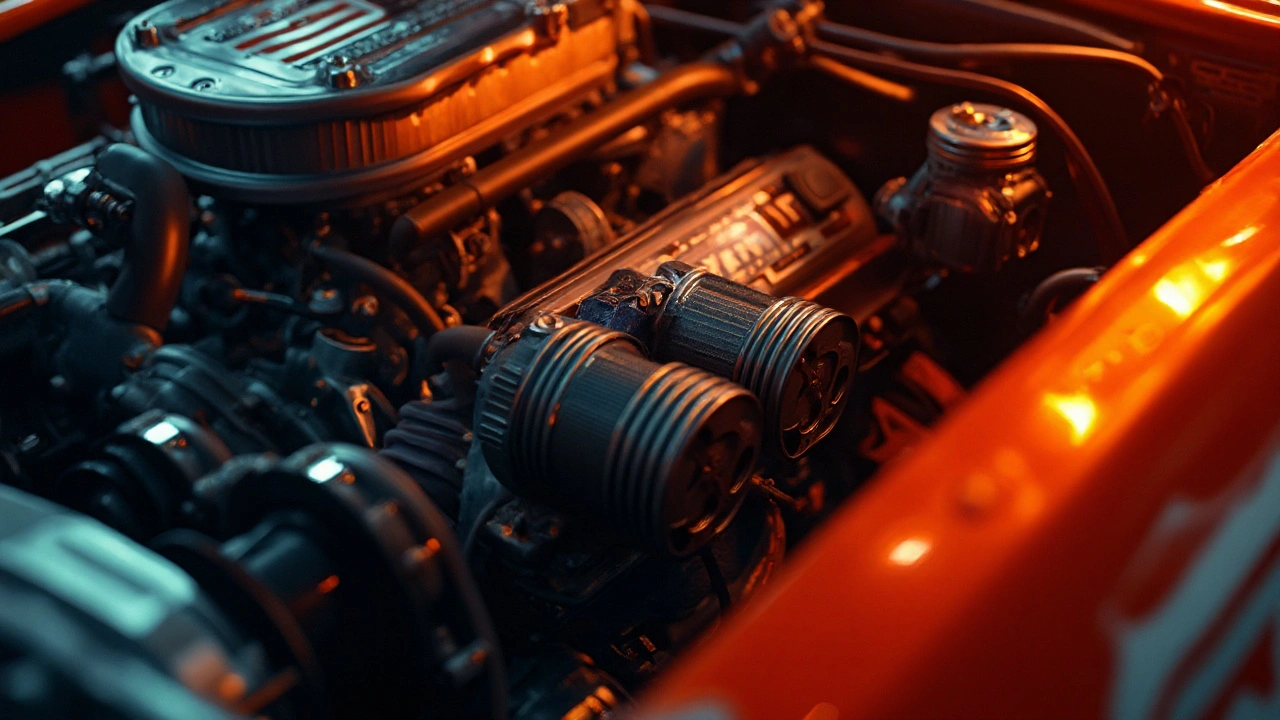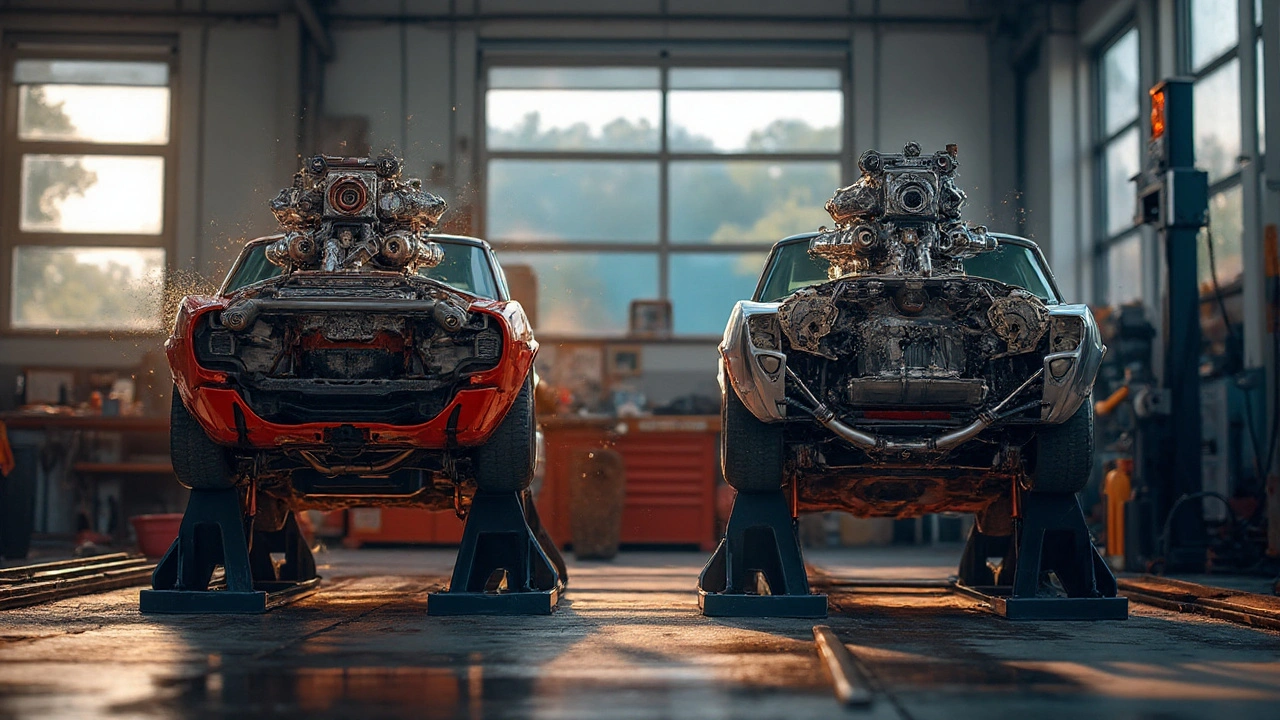Performance Upgrade Planner
Car parts are the individual components that make a vehicle move, stop, and stay comfortable. When you understand how each piece works, you can fine‑tune performance, cut down wear, and keep the car running longer. This guide walks you through the most influential parts, shows where to save money, and offers practical upkeep tricks.
Understanding How Core Parts Interact
Every vehicle is a system of systems. The engine converts fuel into power, while the transmission matches that power to the wheels. The suspension absorbs bumps and keeps the tires in contact with the road. Meanwhile, the brakes convert kinetic energy into heat, letting you stop on demand. The exhaust system manages gases, influencing both efficiency and sound. Together they create a balance of power, control, and comfort.
Think of them as a band: if the drums (engine) are too loud or the guitarist (transmission) is out of tune, the whole performance suffers. Understanding the role each part plays lets you target upgrades that actually move the needle.
Parts That Directly Affect Performance
- Air intake and filter: A high‑flow filter lets more air in, raising horsepower by up to 5% according to a 2023 SAE test.
- Turbocharger: Forces extra air into the engine, delivering up to 40% more torque when paired with proper tuning.
- Spark plugs: Iridium plugs ignite fuel more efficiently, shaving off 0.1seconds per acceleration.
- Fuel injectors: Upgraded injectors support higher flow rates, essential for boosted engines.
- Exhaust headers: Reduce back‑pressure, improving scavenging and adding 3-7 hp.
- ECU (Electronic Control Unit): Remapping the ECU aligns fuel and ignition timing with new hardware, unlocking the full potential of other upgrades.
Each of these items works best when the rest of the system can handle the extra stress. That’s why a balanced approach-engine, intake, and exhaust together-yields the most reliable gains.
Choosing Quality: OEM vs. Aftermarket
When it’s time to replace a worn component, you’ll run into two main camps: original equipment manufacturer (OEM) parts and aftermarket alternatives. OEM parts are made to the exact specs of the factory, while aftermarket parts can prioritize cost, performance, or specialty applications.
| Attribute | OEM | Aftermarket |
|---|---|---|
| Cost | Higher (average 30% above base) | Lower to comparable (often 10‑25% cheaper) |
| Durability | Designed for average lifespan (≈80,000mi) | Varies; performance parts may last longer under proper care |
| Performance Gain | Neutral - matches original specs | Potential boost (5‑30% depending on part) |
| Warranty | Typically 3‑5years from dealer | Ranges from 1year to lifetime, often tied to installation |
| Fitment | Exact factory fit, no modifications | May require adapters or minor adjustments |
If your goal is pure reliability and resale value, OEM is the safe bet. For enthusiasts chasing horsepower or weight savings, reputable aftermarket brands-backed by independent testing-often deliver measurable improvements.

Maintenance Hacks for Longevity
Even the best parts will fail if neglected. Here are three habits that keep the whole system humming:
- Regular fluid checks: Engine oil, transmission fluid, and brake fluid each have optimal viscosity ranges. Swap oil every 5,000‑7,500mi; use synthetic blends for high‑temperature engines.
- Inspect wear items: Brake pads, rotors, and wheel bearings show wear visually and through noise. Replace pads before the 30,000‑mi mark to avoid rotor damage.
- Keep the cooling loop clean: A clogged radiator or old coolant can cause overheating, accelerating wear on gaskets and pistons. Flush the system every 40,000mi.
These checks cost a few dollars each but prevent expensive repairs down the road.
Strategic Upgrades for Performance Gains
When you decide to upgrade, follow a logical ladder:
- Stage1 - Breathing: Upgrade the air filter, intake manifold, and cat‑back exhaust. Expect a modest 5‑10hp lift and a throatier sound.
- Stage2 - Powertrain: Add a turbocharger or supercharger, reinforce the fuel system, and remap the ECU. This can add 30‑50hp on a 2.0L engine.
- Stage3 - Handling: Enhance the suspension with adjustable coil‑overs, install performance brake pads and slotted rotors, and fit lightweight wheels. Handling improves by up to 15% on twisty roads.
Skipping stages often leads to bottlenecks. For example, a turbo without upgraded fuel injectors will run lean and risk engine damage.
Related Concepts and Next Steps
Understanding car parts opens doors to deeper topics: vehicle diagnostics (reading OBD‑II codes), fuel‑efficiency strategies (eco‑driving, tire pressure management), and automotive sustainability (recycling OEM components). After mastering upgrades, you might explore performance tuning software, chassis reinforcement, or hybrid‑system enhancements.
Whether you’re a weekend mechanic or a daily commuter, the right mix of quality parts and disciplined maintenance keeps your ride fast, safe, and long‑lasting.
Frequently Asked Questions
How often should I replace my engine oil?
Synthetic oil typically lasts 7,500mi, while conventional oil should be changed every 5,000mi. Check the owner’s manual for the exact interval for your model.
Are aftermarket brake rotors worth the investment?
Performance rotors-especially slotted or drilled ones-improve heat dissipation and reduce brake fade in spirited driving. For daily commuters, high‑quality OEM rotors are usually sufficient.
What’s the biggest performance boost I can get without engine internals?
A combination of a high‑flow intake, cat‑back exhaust, and ECU remap can net 5‑10% more power and better throttle response, all while keeping the stock engine internals intact.
Does using OEM parts affect my car’s resale value?
Yes. Buyers often trust OEM replacements because they guarantee fit and reliability, which can raise the resale price by 3‑5% compared to a vehicle with unknown aftermarket parts.
How can I tell if my suspension is wearing out?
Common signs include uneven tire wear, a sagging rear end, clunking noises over bumps, and a noticeable dip when cornering. A quick visual inspection of bushings and shocks often reveals cracked or leaking components.
Is there a simple way to boost fuel economy with new parts?
Installing a low‑restriction exhaust and a high‑flow air filter can improve engine breathing, which, when paired with proper ECU tuning, often yields a 2‑3% fuel‑economy gain without sacrificing power.


